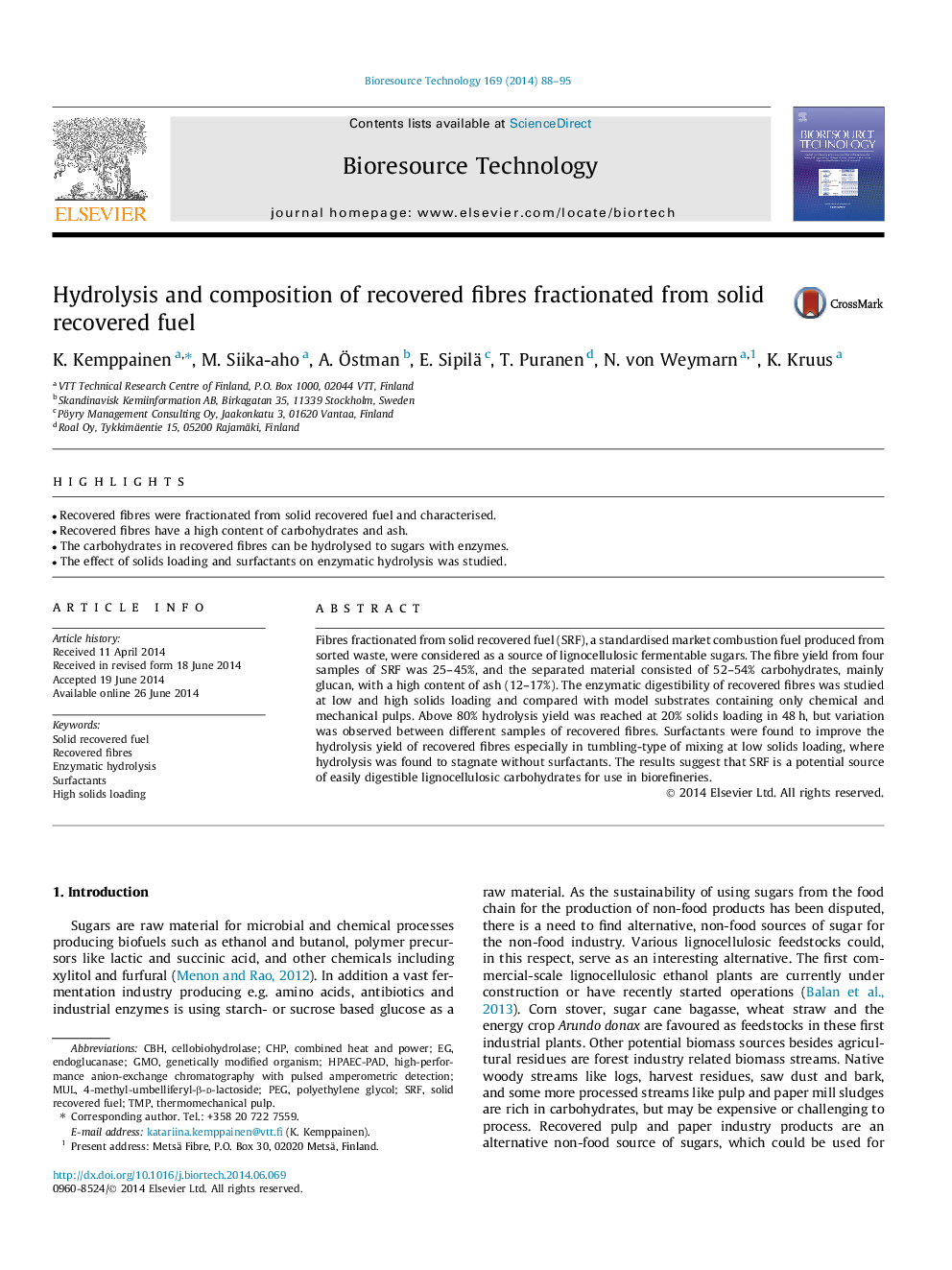| Article ID | Journal | Published Year | Pages | File Type |
|---|---|---|---|---|
| 680659 | Bioresource Technology | 2014 | 8 Pages |
Abstract
Fibres fractionated from solid recovered fuel (SRF), a standardised market combustion fuel produced from sorted waste, were considered as a source of lignocellulosic fermentable sugars. The fibre yield from four samples of SRF was 25-45%, and the separated material consisted of 52-54% carbohydrates, mainly glucan, with a high content of ash (12-17%). The enzymatic digestibility of recovered fibres was studied at low and high solids loading and compared with model substrates containing only chemical and mechanical pulps. Above 80% hydrolysis yield was reached at 20% solids loading in 48Â h, but variation was observed between different samples of recovered fibres. Surfactants were found to improve the hydrolysis yield of recovered fibres especially in tumbling-type of mixing at low solids loading, where hydrolysis was found to stagnate without surfactants. The results suggest that SRF is a potential source of easily digestible lignocellulosic carbohydrates for use in biorefineries.
Keywords
Related Topics
Physical Sciences and Engineering
Chemical Engineering
Process Chemistry and Technology
Authors
K. Kemppainen, M. Siika-aho, A. Ãstman, E. Sipilä, T. Puranen, N. von Weymarn, K. Kruus,
